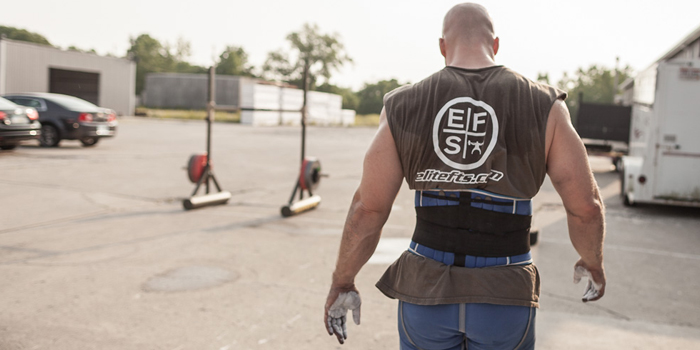
The Atlas Stones is perhaps the most iconic event in strongman. Also called “The Manhood Stones,” the event is universally looked at as the deal breaker, the crusher of dreams, but also the maker of champions. It is rare to see Atlas Stones in any other place but at the very end of a strongman contest, because this event alone requires so much energy, strength, and explosiveness that it will undoubtedly crown the true strongest man or woman. Unfortunately, this is also one of the harder events to train for.
The biggest issue when it comes to training for Atlas Stones is usually lack of equipment. Buying a mold and building your own stones from scratch can be daunting, and buying them premade can be expensive. On top of just having stones, building a platform or buying a yoke for you to load on or over adds to the list of other annoying things required for good training of the Atlas Stones. However, with the advent of strongman gyms popping up all over the country, finding a place to train shouldn’t be much of an issue for most. If you can’t find a good gym with stones, I highly recommend buying some stone molds or the elitefts Stone Trainer. You’ll really only need a few stones, as technique and speed work with stones will be at the core of your training.
RECENT: 5/3/1 for Strongman: Programming Adjustments, Competition Prep, and Training Tips
Now that we’ve got that covered, the biggest issue with stones is how we actually approach training. All too often, I see the same scenario at contests: athletes are tackied to death, they’re setting up too far away from the stone, and if or when they do finally get a stone onto their lap, they are loading it slowly and often times painfully up to a platform. They’ve trained the hell out of their upper back and trained with the heaviest stones they could find leading up to the contest, so what the hell happened?
Stone loading, for the most part, is a dynamic event. I liken it more to something like an Olympic lift than I do a deadlift or squat. The better the technique and the faster the hips, the easier you’ll load a big stone. Granted, there are times where max strength comes into play, like loading a stone on the Arnold platform that weighs over 500 pounds, but usually, the more dynamic the athlete, the better the stone loader.
Approaching the Stone
I learned how to do stones from arguably some of the best stone loaders in strongman. Rick Freitag and Brad Ardrey are two of the best I’ve seen in training and in contest when it comes to loading a stone. I personally witnessed Brad load a stone weighing over 500 pounds for an official lift, and I’ve seen both of these guys load 400-pound stones for reps like they were warming up. The biggest takeaway I got from training with them is approaching the stone and setting up for the lap.
When we approach a stone, we want our feet to basically be centerline in relation to the stone. Think about it almost like you’re setting up for a modified sumo deadlift. Arms go down like you’re about the grab the bar, but instead, you’re rolling it back and forth into your arms, getting your fingers as deep under the stone as your pain tolerance allows. The idea here is to get as much surface area on the stone as possible.
The more surface area we have on the stone, the tighter we can get to brace ourselves for the lift, and the less room for error we have as we bring it to the lap. If you’ve ever tried to load a smaller diameter stone, you know that you quickly become aware how difficult it can be in relation to a stone of the same weight but with a larger diameter.
Lapping the Stone
Once the stone is in your hands and you’re in a good position to initiate the lift, you want to pull it up in between your knees and roll it into your lap. When you watch a good stone loader who may have shorter limbs, you’ll notice that some of them will actually roll the stone up their shins and into their lap. Either way works, but getting a stone into the lap and into a good position where it is ready to load may be one of the most overlooked aspects of a good load.
After you get the stone in your the lap, a lot of people have a tendency to get into a full squat position. While this is a great position on a max stone load to make any proper adjustments before loading, it can be detrimental in a timed event like a stone series or reps over bar. We want the hips a little above parallel so we can initiate the movement with our hips.
The second part of the lap is making sure that our hand placement is correct. If the stone were a steering wheel, we’d want our hand positions to be at 10:00 and 2:00, not 9:00 and 3:00.
Think of your upper body as a guidance system, not the main mover. This is one of the reasons I like stone loading to an Olympic lift. If we pull with our upper body too soon and don’t let our lower body do most of the work, we slow down, technique drops by the wayside, and we miss loads.
Loading the Stone
Now that we’ve got our arms in a good place, have as much surface area covered as possible, and our hips are in a good position, it’s time to load the stone. This is going to require an explosive shifting of the hips under our shoulders, and then extending into triple extension, pulling our arms back and letting the stone float up to the platform.
Even during a high stone load—say 56 inches and up—the stone should float up onto the platform or over the bar. If that speed slows down, now we’re muscling it up with our back and wasting valuable energy. In order to effectively create enough hip drive, I suggest using the following movements to build fast and efficient hips.
Box Squats
Correctly done, the box squat is the best movement I can think of with carryover to stone loading. When we box squat, we are loading the glutes and hamstrings at the bottom position and driving off the box with the same hip drive we’re looking for to transfer into a stone load.
Front Squats
In addition to box squats, front squats have great carryover to a stone. The weight in a stone load is in front of you, and while we want the hips to bear the brunt of the burden, we still need a strong torso and upper back working in unison with our legs.
High Stone Loads
This may very well be my favorite way to train Atlas Stones. Thinking about loading stones as a dynamic effort movement versus a max effort movement will have a greater carry over to loading in a contest. This will help you nail down the triple extension and force you to use your arms as a guide rather than a main mover. We can always build the strength around the stone, but building the technique with max effort stone work more than every once in awhile will eventually hit a point of diminishing returns.
Putting It Into Action
Here is an example of how I would set up a week in a program to focus on building your stone loading:
Day 1
- Deadlift: Work up to a heavy triple
- Front Squats: 5x3 heavy
- GHRs: 3x10
- Single-Leg RDLs: 4x10 each leg
Day 2
- Overhead Work: Work up to a heavy triple
- Smith Machine Press: 3x8 heavy
- Lat Pulldowns or Pull-Ups
- Heavy Rows
Day 3
- Box Squats with Accommodating Resistance: 8x2, 40-60%, 45-60 seconds rest between each set
- Pin or Block Pulls: 5x3 heavy
- Leg Press: 4x10 heavy
- Walking SS Yoke Bar Lunges: 4x10 each leg
Day 4
This day will be used for event work.
- Overhead Work from Floor: Reps or speed work, depending on upcoming contest
- Moving Events: Choose one to two
- High Stone Loads: Height 15-20% higher than competition height, stone weight 70-80% of heaviest competition weight or 60-70% of max stone PR
Additional Tips
Tacky
DO NOT overload with tacky when you are in a contest. This is one of the biggest mistakes I see in contests. Too much tacky will lead to slipping right off the stone. A good pair of stone sleeves—or my personal favorite, athletic tape—and just enough tacky to create a bond to the stone is the perfect combination for stone loading. Other factors like what place you are in line for the stones makes a big impact as well. If you’re first in line and it’s a pretty clean stone, a little more tacky may help, but if you’re at the back of the pack, there will usually be plenty of tacky on the stone.
I’ve also noticed in my experience that tacky selection is important based on the temperature. For extremely cold stone loading, I prefer Spider Tack because it will still be pliable and sticky, whereas some other tackies will freeze over. For indoors, I prefer a cold weather tacky because it will stick just enough to load the stone, but not so much that you can’t get your arms off the stone when it’s on the platform. For hot weather, any heavy duty tacky will work. Experimenting with different tacky will definitely help you with this, but that is the general guideline I’ve followed while competing.
Tape and Sleeves
Do not wrap up too early. If you have pre-tape spray, use it, but you may want to shave your arms first. Wrapping early may lead to sweating too much and making tape unravel or sleeves slide down your arms. You want tape or sleeves to be as tight and as dry as possible before you go into loading. When taping, start from the bottom up and always double layer. This video should help!
Shirt
Make sure you have a tight shirt or go bare-chested. I realize that if you’re a woman this may not be an option unless you’re just that hardcore, in which case who am I to judge? 100% cotton or a blend close to that is usually the best because they are durable and they will stick to the stone a little better. If possible, a shirt with raised printing on the front will also help. A lot of blended shirts will be too slippery and cause the stone to roll in on itself.
Pre-Run Setup
Before you do your stone run, the promoter should give you enough time to go through the stones and set them at the distance you want away from the platform so you can have a smooth run. This is why it’s important to work on your setup and transitions while in training. Tenths of a second can be the difference between winning or losing, and often times that can just be because of good or bad footwork. Run through the series in your training and in your head before you perform.
Stone loading will always be one of the greatest events in strongman. It is the iconic event known all around the world and most associated with strongman. If you want to be a good strongman, work on them, get great at them, and invest in them. They will almost always be in a contest, and if they aren’t, go do a different contest. As always, if you have any questions, please don’t hesitate to contact me, and good luck with your training!










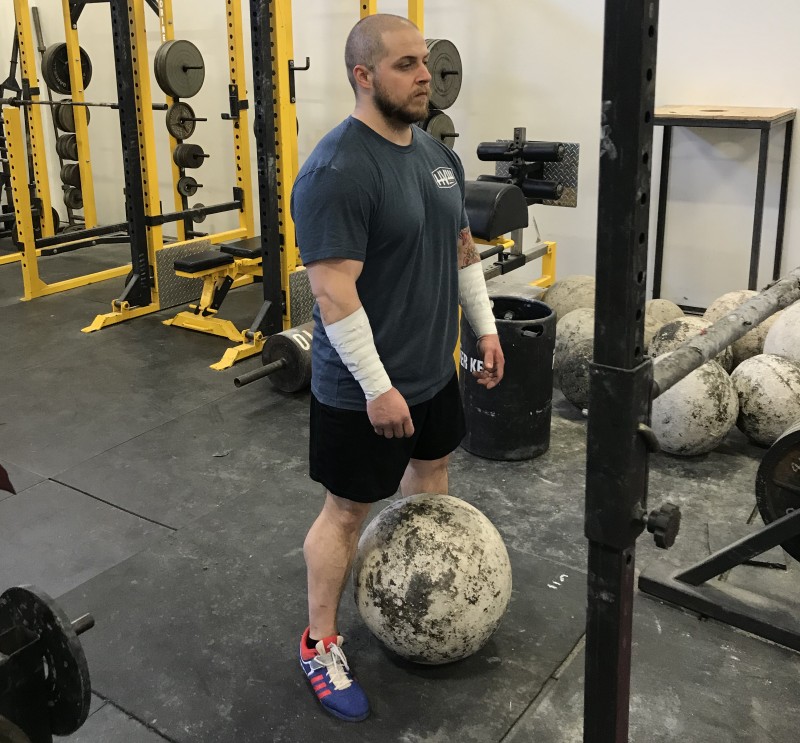
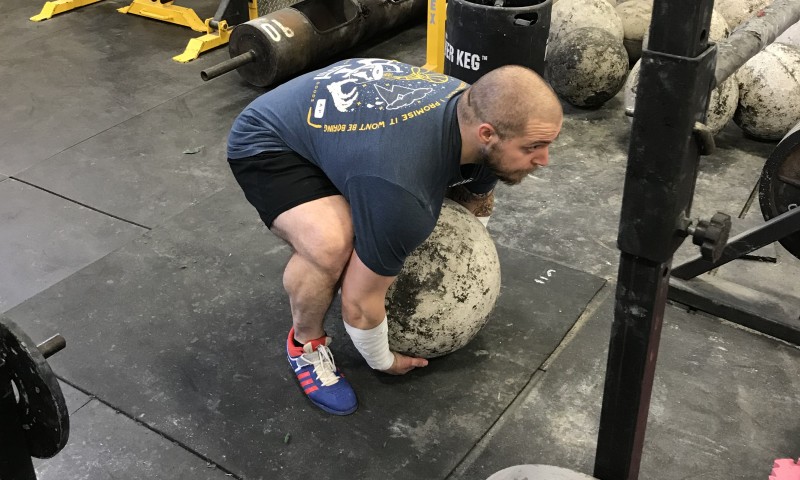
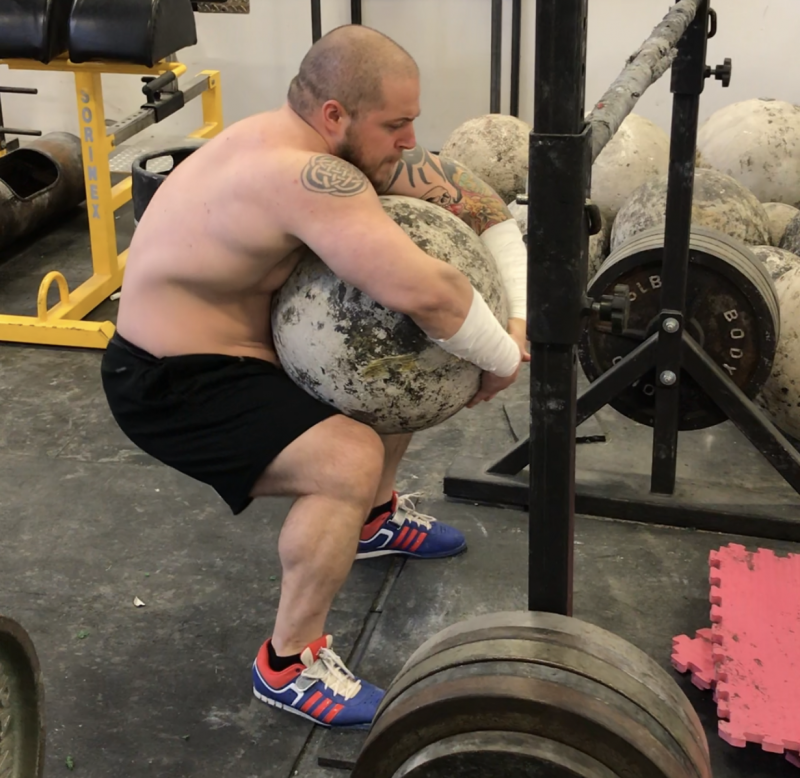
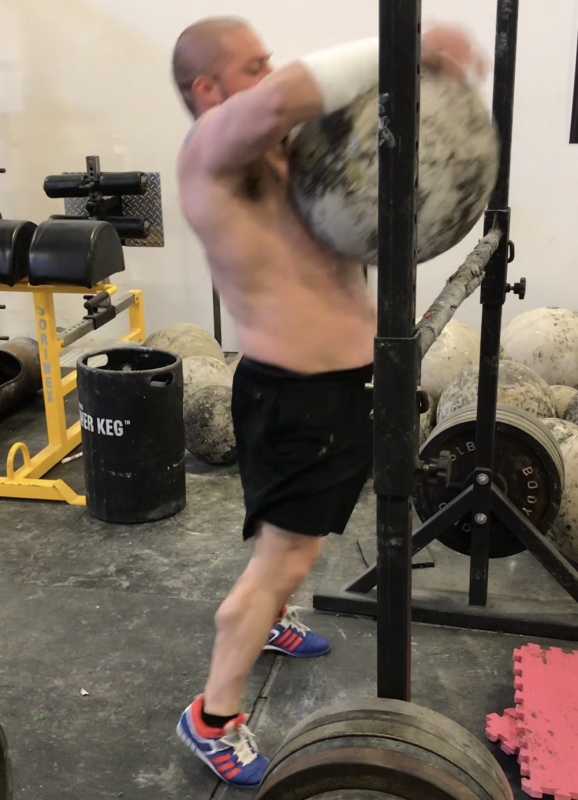

Any other exercises you can suggest besides the above? Thanks and I hope you really can because this is heartbreaking…